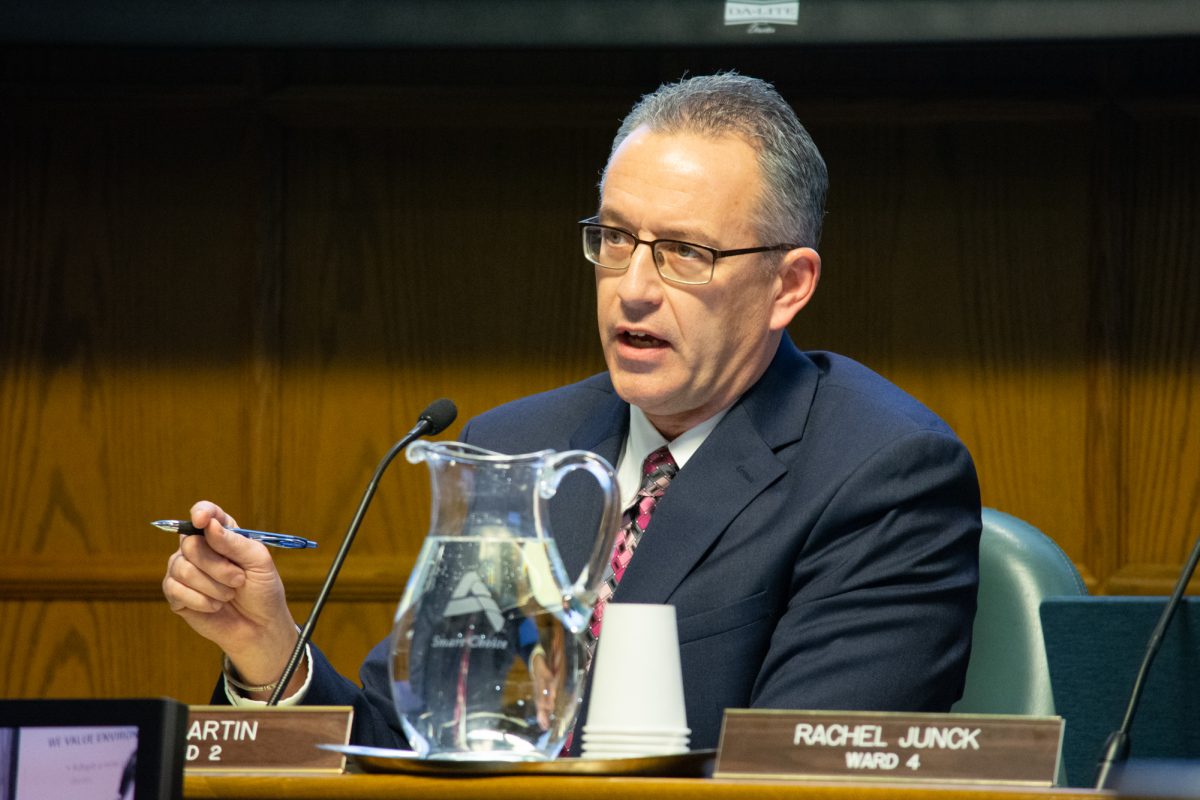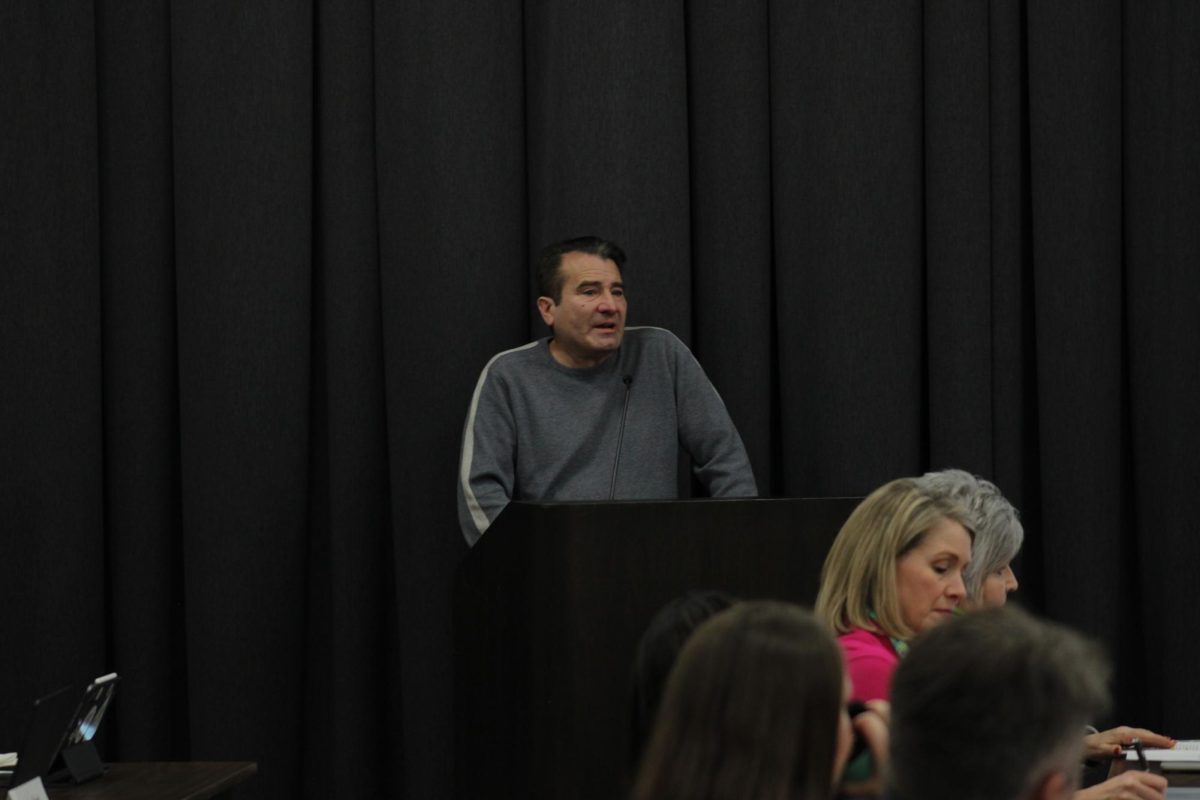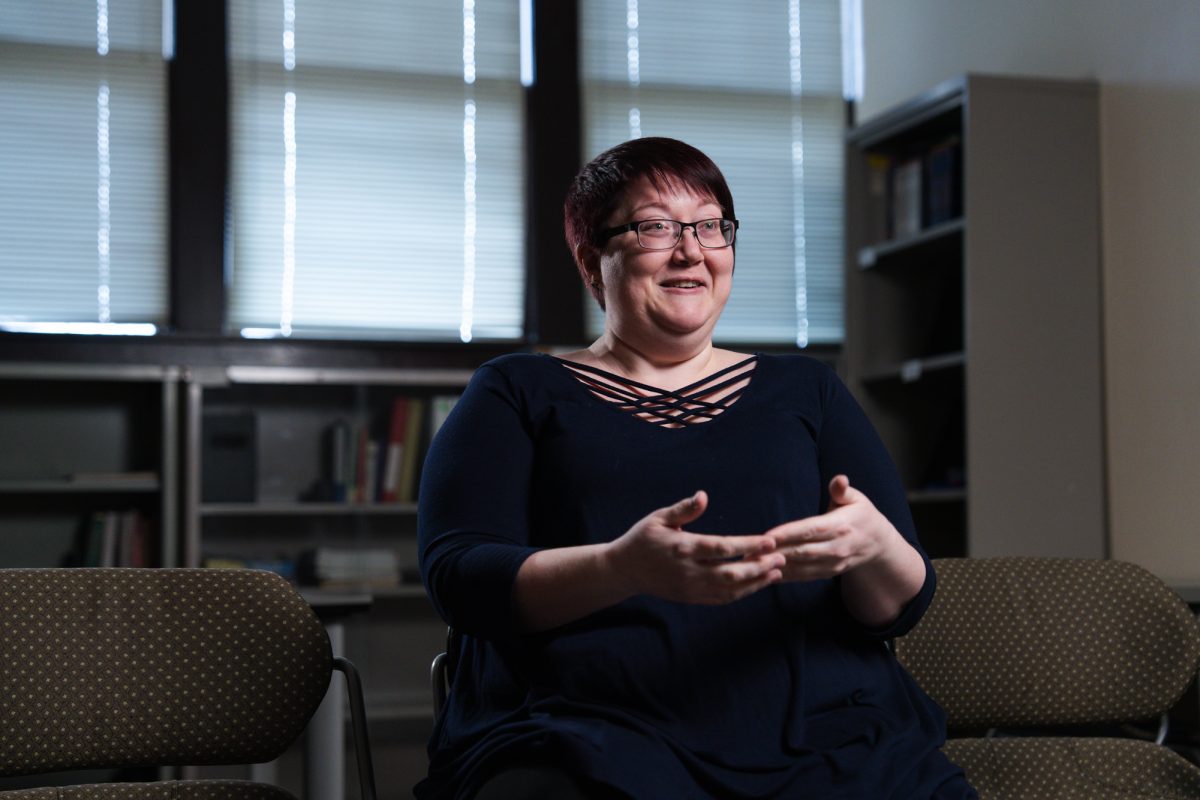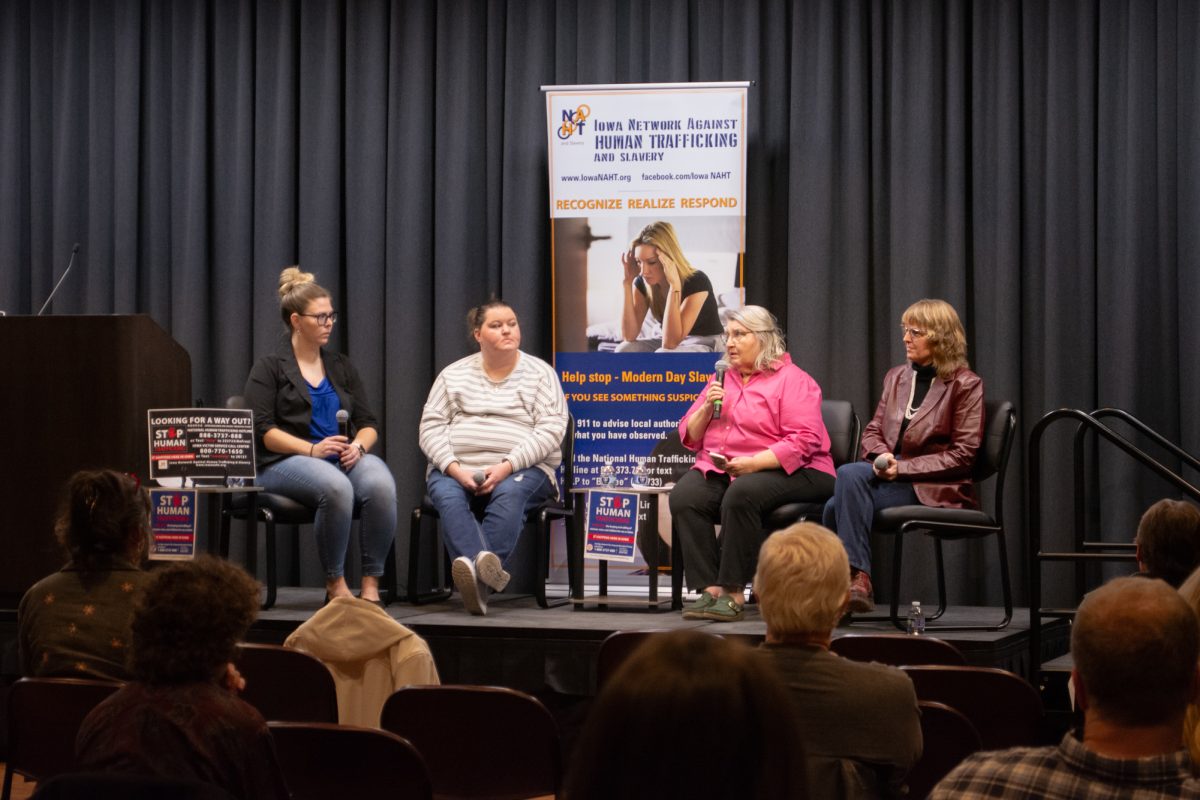Editor discusses women’s negative image in media
March 6, 1998
A representative of the magazine industry criticized and sided against the media Wednesday during a discussion of the debate involving images of women in print.
Mary Kay Blakely, contributing editor for Parents, Ms. and The Los Angeles Times magazines, held a conference at 8 p.m. in the Great Hall of the Memorial Union, marking her third appearance at ISU within six years.
Blakely focused on issues about media perception of women and politics during her presentation of “Let Them Eat Fluff: The Trivilization of Women in Magazines.”
She recalled her involvement in print media, which began 24 years ago with a teaching career at Purdue University in Fort Wayne, Ind. Blakely said she was encouraged by a local editor to publish her lecture notes in a newspaper, and she later began writing a weekly column in the Fort Wayne Journal Gazette in 1974.
“I love communicating with people whom I never met,” Blakely said. “And I have the passion to promote motherhood and politics.”
During her five-year career with the Gazette in the 1970s, Blakely said some people suspected her views were communist.
“I called my husband ‘my comrade’ in a story, and people asked me if I’m a communist,” she said.
Working as a columnist for The New York Times in 1981, Blakely said it was a shock to see that conservative women’s magazines were in politics.
Blakely said her first editorial criticizing Nancy Reagan’s expensive inaugural gown in the Times was rejected on grounds that the material had nothing to do with women’s issues.
But the gown editorial had been intended to be a reminder of the high unemployment problem in the United States at the time, she said.
“I assume women’s magazines can really allow people to write anything, but there are tons of things being constantly rejected,” Blakely said.
As an activist of women’s issues, Blakely said there are two important psychological tasks that adult women have to negotiate regularly throughout their lives. The tasks, she said, are to grow and to adapt to changing society; she added that content in magazines sometimes works against women.
“Instead of growing wider, the magazines perceive women to grow smaller,” Blakely said.
Blakely said magazines actually work against women by assuming they should be on a perpetual diet. Some concepts in magazines, such as dieting tips, contribute to depression among women, she said.
“I’m aware that women magazines only give their views of the issues [without] providing suggestions,” she said.
Blakely further explained her objection to the way magazines handle women’s issues by displaying headlines printed on the front covers of such magazines as Redbook, Glamour and New Woman.
She added that the media gives impressions that women need to diet, and that diet is a part of a woman’s self-confidence.
Blakely’s third visit to ISU also included a panel with ISU history professors Valerie Grim and Dorothy Schweider titled “150 Years After Seneca Falls: Bridging Race, Class and Gender.”
Blakely’s presentations are part of Women’s History Month, organized by the Women’s Center at ISU. This month celebrates the 150th anniversary of women’s rights in the United States.






